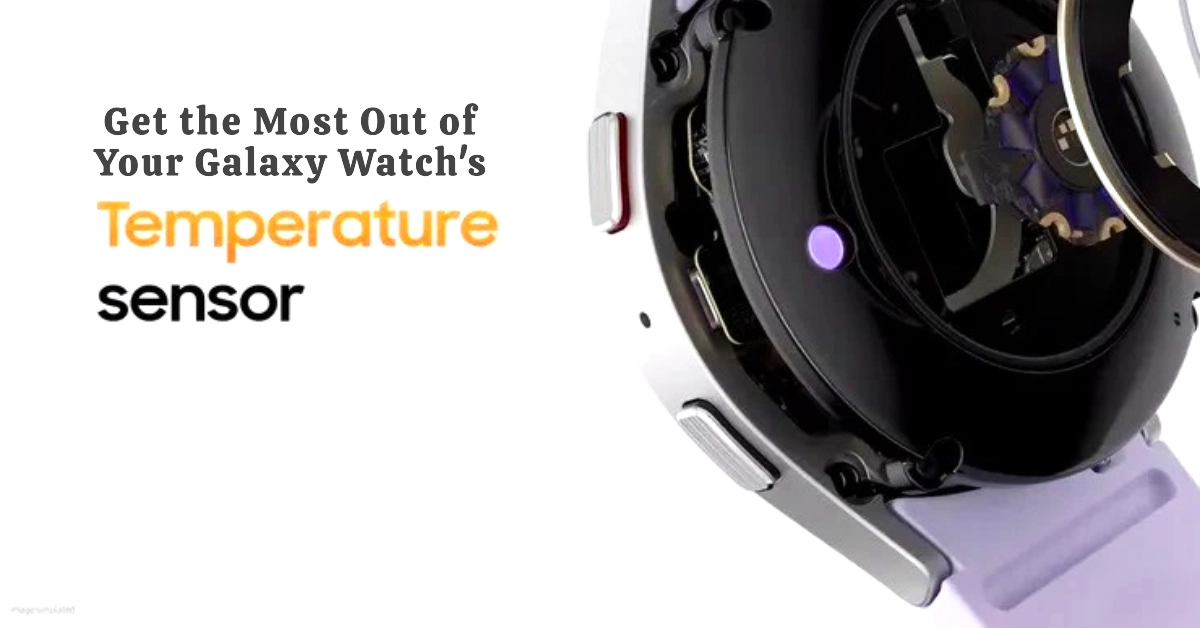The Galaxy Watch series (Galaxy Watch 4 and newer) includes a unique feature among smartwatches – the ability to measure skin temperature. This innovative sensor offers insights into your health and well-being.
Whether you’re curious about sleep patterns, stress levels, or overall health trends, the temperature sensor can provide valuable information. Let’s explore how to use this feature to its full potential.
Understanding the Skin Temperature Sensor
What is It? Your Galaxy Watch has an infrared temperature sensor designed to measure the temperature of your skin from your wrist.
This is different from core body temperature, which is the temperature of your internal organs. Skin temperature naturally fluctuates throughout the day and night based on various factors.
What Does Skin Temperature Affect?
- Sleep: Skin temperature changes are associated with different sleep stages. Monitoring them could help analyze your sleep quality.
- Menstrual Cycles: Skin temperature shifts slightly during different menstrual cycle phases. Tracking these variations can aid in ovulation prediction and family planning.
- Stress Levels: Skin temperature may change in response to stress, offering potential insights into your stress response.
- Illness Detection: While not a medical-grade tool, changes in skin temperature may act as an early indicator of developing illnesses like fever.
How to Take a Skin Temperature Measurement
- Put on Your Watch: For accuracy, ensure your Galaxy Watch is snug on your wrist, but not overly tight. Wait at least 15 minutes after putting it on before taking a measurement.
- Open the Samsung Health App: On your connected smartphone, navigate to the Samsung Health app.
- Go to ‘Skin Temperature’: Locate the “Skin temperature” tile/card within the Samsung Health app.
- Initiate ‘Measure’: Tap the “Measure” button to begin a skin temperature measurement.
- Keep Still: Remain still during the measurement. Avoid movement to ensure accuracy.
Interpreting Your Results
- Baseline Temperature: Initially, focus on establishing your baseline skin temperature. This will vary between individuals.
- Trends Over Time: Pay attention to trends in your skin temperature over time rather than individual readings.
- Context is Key: Consider the context of your measurements. Factors such as exercise, environment, and time of day can affect skin temperature.
Using Skin Temperature Data
- Samsung Health App: The Samsung Health app will display your skin temperature data in graphs and charts, making it easier to visualize trends.
- Sleep Tracking: If you wear your Galaxy Watch during sleep, it may automatically use skin temperature data to enhance sleep insights.
- Cycle Tracking: Samsung Health offers a feature for cycle tracking, where skin temperature data can be utilized to help predict ovulation.
Important Notes:
- Accuracy: The Galaxy Watch’s skin temperature sensor is not a medical-grade thermometer and shouldn’t replace traditional thermometers for diagnosing illnesses.
- Factors Affecting Readings: Environmental temperature, recent exercise, and even tight watch bands can influence skin temperature readings.
- Consistency: Taking measurements at similar times each day provides more consistent and reliable data.
Getting the Most Out of Your Galaxy Watch Temperature Sensor
By understanding how the Galaxy Watch’s temperature sensor works, taking accurate measurements, and analyzing your data over time, you can tap into valuable insights about your health and well-being.

